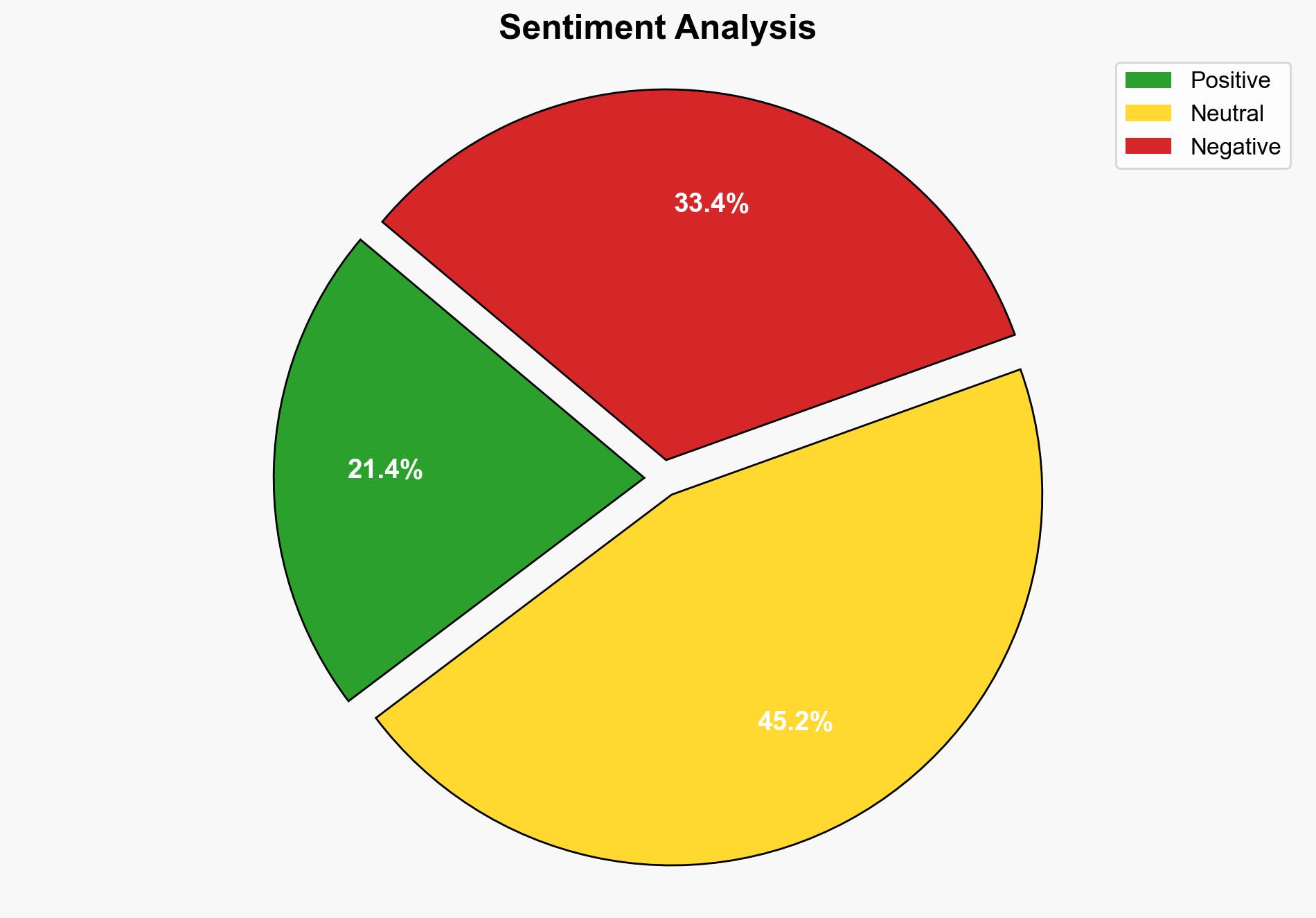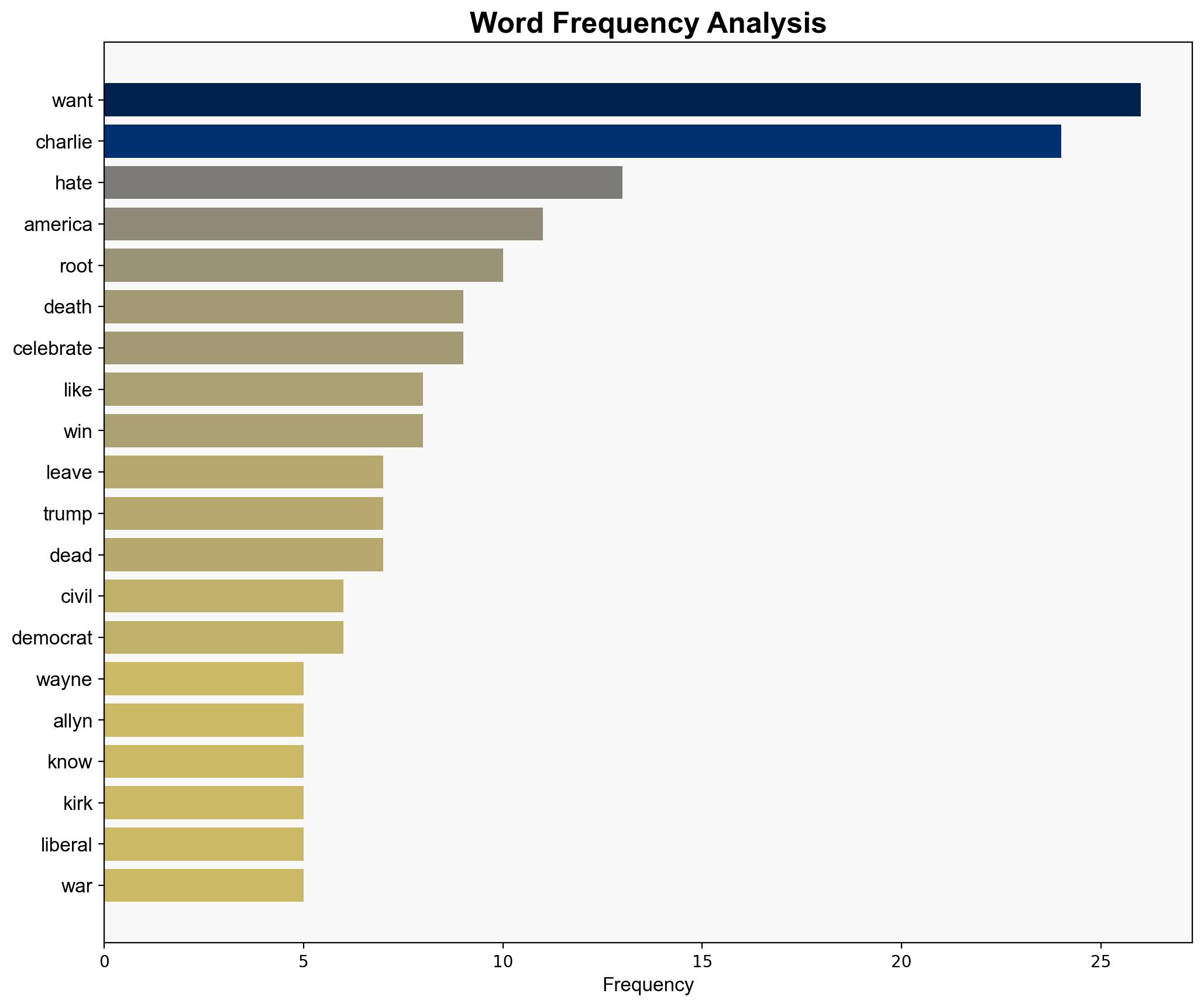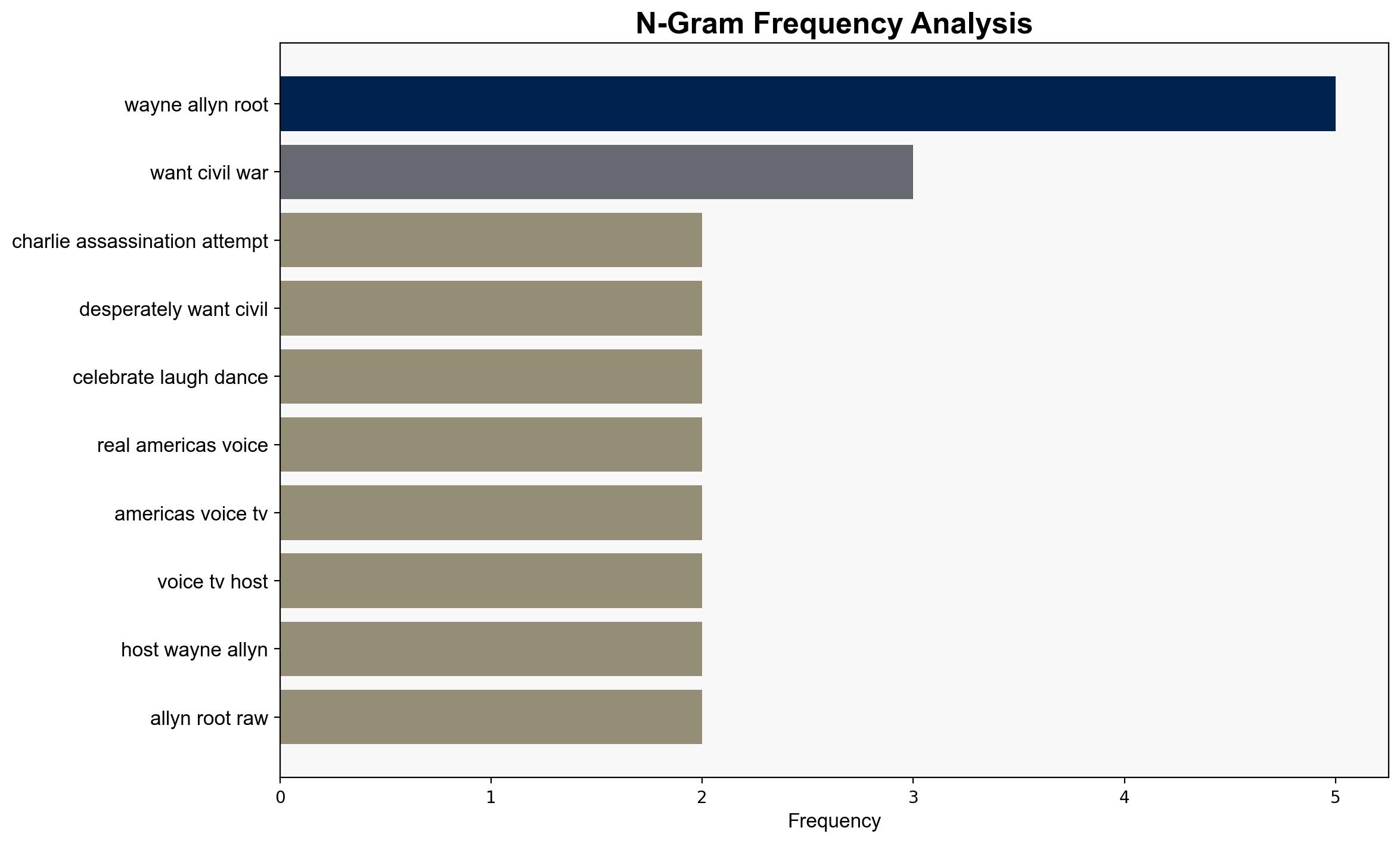WAYNE ROOT No Both Sides Are Not the Same No Both Sides are Not Guilty Stop Preaching Unity and Kumbaya The Left Hates Us They are Demonic Here Is the Only Way to Respond – Thegatewaypundit.com
Published on: 2025-09-14
Intelligence Report: WAYNE ROOT No Both Sides Are Not the Same No Both Sides are Not Guilty Stop Preaching Unity and Kumbaya The Left Hates Us They are Demonic Here Is the Only Way to Respond – Thegatewaypundit.com
1. BLUF (Bottom Line Up Front)
The analysis suggests a high level of polarization and potential for increased domestic unrest. The most supported hypothesis is that the rhetoric is intended to mobilize a specific political base by framing the opposition as an existential threat. Confidence level: Moderate. Recommended action: Monitor for potential escalation in rhetoric and actions that could lead to violence.
2. Competing Hypotheses
1. **Mobilization Hypothesis**: The rhetoric is a strategic effort to galvanize a political base by portraying the opposition as a demonic and existential threat, thereby justifying extreme measures.
2. **Reactionary Hypothesis**: The rhetoric is a reaction to perceived threats and actions from the opposition, reflecting genuine fear and anger rather than a calculated strategy.
Using Analysis of Competing Hypotheses (ACH), the Mobilization Hypothesis is better supported due to the consistent use of emotionally charged language aimed at rallying support and the lack of concrete evidence of immediate threats from the opposition.
3. Key Assumptions and Red Flags
– **Assumptions**: The assumption that the opposition is uniformly hostile and violent is critical to the Mobilization Hypothesis. There is also an assumption that the audience will respond predictably to the rhetoric.
– **Red Flags**: The lack of verifiable evidence for claims of widespread celebration of violence is a red flag. The narrative relies heavily on anecdotal and potentially exaggerated accounts.
– **Cognitive Bias**: Confirmation bias may be present, as the rhetoric selectively highlights incidents that support the narrative while ignoring contradictory evidence.
4. Implications and Strategic Risks
The rhetoric could exacerbate existing divisions, leading to increased polarization and potential for violence. There is a risk of self-fulfilling prophecies, where the expectation of conflict leads to actions that provoke it. Economically, increased unrest could destabilize markets and affect consumer confidence. Psychologically, the narrative could deepen distrust in institutions and media.
5. Recommendations and Outlook
- Monitor social media and other communication channels for signs of escalation or calls to action.
- Engage in dialogue initiatives to reduce polarization and promote understanding.
- Scenario Projections:
- Best Case: Rhetoric de-escalates, and dialogue initiatives succeed in reducing tensions.
- Worst Case: Rhetoric leads to widespread violence and destabilization.
- Most Likely: Continued polarization with sporadic incidents of unrest.
6. Key Individuals and Entities
– Wayne Allyn Root
– Charlie Kirk
– President Trump
– Mentioned entities include Antifa and various unnamed individuals purportedly celebrating violence.
7. Thematic Tags
national security threats, polarization, domestic unrest, political rhetoric





